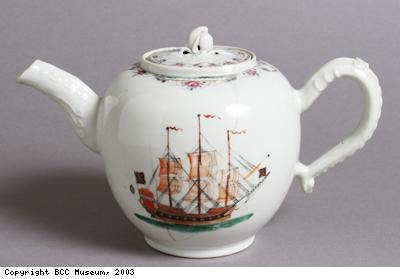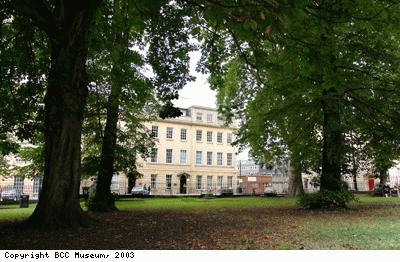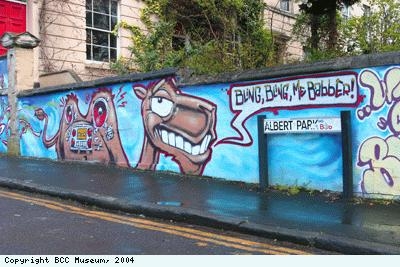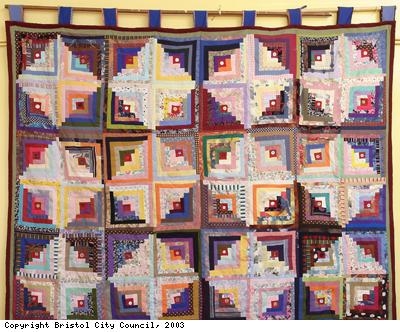Page 254 of 352 pages « First < 252 253 254 255 256 > Last »
Mask.

Description:
Pottery mask, British West Indies.
Date: unknown
Copyright: Copyright BCC Museum
Object ID:Ea9942
Mask

Description:
Pottery mask, British West Indies.
Date: unknown
Copyright: Copyright BCC Museum
Object ID:Ea9940
Chinese porcelain teapot.

Description:
Chinese porcelain teapot, c1805-1825. The teapot has a design of a British ship on each side, flying the British flag – the Union Jack. The ship is said to be the slave ship Minerva, owned by Richard Champion of Bristol.
Date: c1805-1825
Copyright: Copyright BCC Museum
Object ID:G505
Portland Square

Description:
Portland Square, near St Pauls, Bristol.
Creator: David Emeney
Date: 2003
Copyright: Copyright BCC Museum
Graffiti, Albert Park.

Description:
Graffiti, Albert Park, St Pauls, Bristol.
A camel saying Bling, bling me babber! in a Bristolian accent.
Creator: David Emeney
Date: 2004
Copyright: Copyright BCC Museum
Aunt Sally

Description:
From the middle of the nineteenth century, Aunt Sally was a popular game at the fairgrounds and racetracks of Britain.The head of an old woman with a clay pipe in her mouth was set up and players threw sticks at it to try and break the pipe.There are numerous possible origins for the game.
The Aunt part of the name probably means an old black woman, employed in the USA from the eighteenth century onwards.
A childrens anti-slavery book called Aunt Sally: or, The Cross the Way of Freedom was produced by the American Reform Tract and Book Society,Cincinnati, Ohio , in 1858. The book is a true account of the Slave-life and Purchase of a slave called Aunt Sally .
Aunt could also be applied to any elderly woman.
There was a popular black-faced doll in the 1820s, also called Aunt Sally which may have had a direct influence on the game.
The phrase Aunt Sally eventually became a term, still used today, for somebody or something that is an easy target for attack or criticism.
The game Aunt Sally is still popular in some public houses in Britain today. Instead of knocking a pipe out of an old woman’s mouth, players try to knock a Dolly (skittle) off a pole by throwing batons (sticks of wood) at it.
Date: 19th century
Copyright: Copyright BCC Museum
Quilt

Description:
Quilt made by quilters at The Golden Agers Club, Easton, Bristol. This quilt uses a traditional American design called Log Cabin . The quilt is made up of blocks (or squares) and each one has a red square in the centre which represents the fire found in traditional American log cabins. The block (or square) has one light side and one darker side, which represents the light from the fire coming into the room. Blocks are then placed together to make the overall quilt design. The quilter tries to select the correct tones so that the design can be seen
Creator: Golden Agers Club
Date: 2003
Copyright: Copyright Golden Agers Club
Quilt

Description:
Quilt made by quilters at The Golden Agers Club, Easton, Bristol. This quilt uses a traditional American design called Hovering Hawks. Hawks, or old turkey buzzards, are commonly seen in the skies in south western America. The quilt is made up of blocks (or squares) and each one has the hovering hawk shape inside it, which looks similar to the bird in flight.The blocks are then placed together at different angles to make the overall quilt design. The quilter tries to contrast tone and pattern so that the design can be seen.
Creator: Golden Agers Club
Date: 2003
Copyright: Copyright Golden Agers Club
Page 254 of 352 pages « First < 252 253 254 255 256 > Last »



